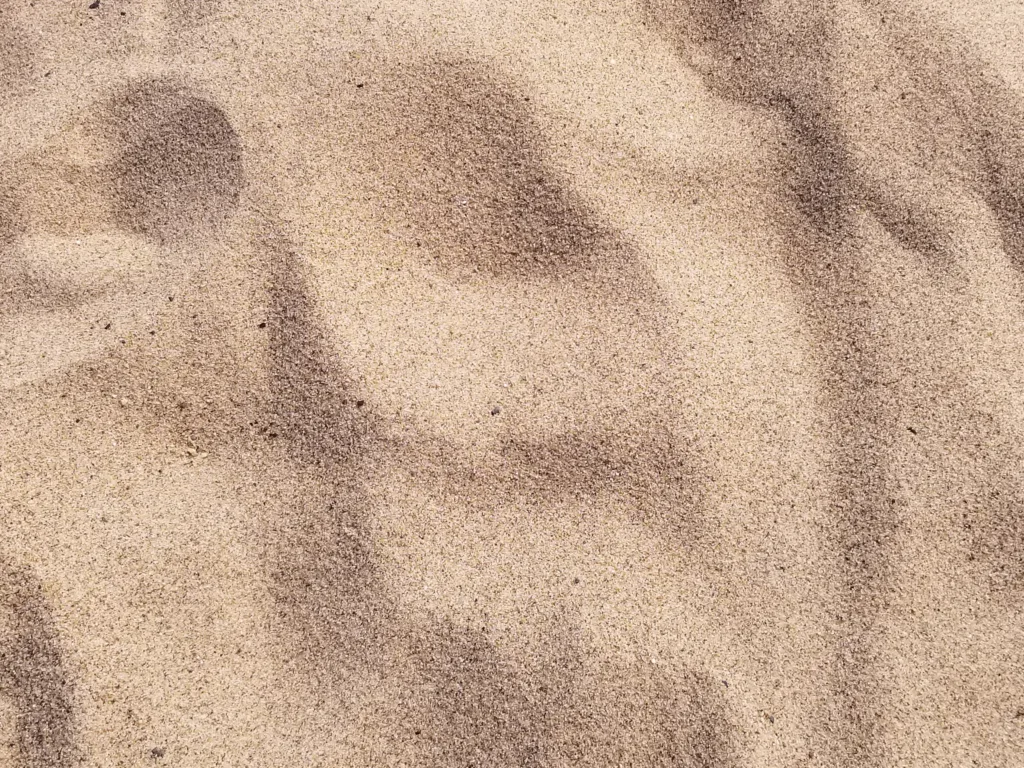Sand is a granular material that is composed of rock fragments, minerals, and other organic materials. This material is commonly found in deserts, beaches, and riverbeds, making it a vital component of our environment. However, one of the most significant characteristics of sand is its permeability.
Permeability is the ability of a material to allow fluids to pass through it. In the case of sand, it has a high permeability due to its physical properties. Sand particles are relatvely large and have spaces between them, allowing water to pass through easily. This property makes sand an excellent material for filtration and drainage systems.
In fact, sand is used extensively in the construction industry for its permeability. It is commonly used in septic systems, drainage fields, and even in the production of concrete. Its high permeability allows for efficient water drainage, preventing the buildup of excess water and reducing the risk of flooding.
However, not all sand is created equal when it comes to permeability. The permeability of sand can vary depending on its texture and composition. For example, fine-grained sands, such as those found in riverbeds, have lower permeability than coarse-grained sands, such as those found on beaches. This is because fine-grained sands have smaller pore spaces, which restrict the movement of water.
Sand is a highly permeable material that is essential for many industries. Its ability to allow water to pass through it efficiently makes it an excellent choice for filtration and drainage systems. However, the permeability of sand can vary depending on its texture and composition. So, it is always essential to consider these factors when choosing sand for a specific application.
Permeability of Sand
The permeability of sand is approximately 5.0. This means that sand has a relatively high ability to allow liquids and gases to pass through it, making it highly permeable. In comparison to oher soil textures, such as loam, clay loam, silty clay, and clay, sand has the highest permeability. This is due to the fact that sand has larger pore spaces between its particles, allowing for greater movement of fluids and gases. Understanding the permeability of sand is crucial in various industries, including agriculture, engineering, and geology, as it can affect the behavior and movement of water and other fluids in the ground.

The Permeability of Sand
Sand is highly permeable due to its physical characteristics. Sand particles are relatively large and have irregular shapes, which allows for a lot of space between the particles, creating large pore spaces. These pore spaces allow for water to move through the sand easily, making it highly permeable. Additionally, the irregular shapes of the sand particles create channels and pathways that facilitate water movement. In comparison to other soil types, such as clay, which has smaller particles and less pore space, sand is much more permeable. This makes it useful for applications such as filtration, drainage, and groundwater recharge.
Comparing the Permeability of Sand and Soil
Sand is generally more permeable than soil. This is because sand particles are larger and have more space between them compared to soil particles. This means that water can move more freely through the spaces in the sand, allowing it to permeate more easily. Soils, on the othr hand, have smaller particles and more tightly packed structures, which can inhibit water movement and reduce permeability. However, it’s important to note that the type of soil can also affect its permeability. For example, sandy soils are generally more permeable than clay soils, but loamy soils (which contain a mixture of sand, silt, and clay) can have varying degrees of permeability depending on their composition.
The Benefits of Highly Permeable Materials
A material that is highly permeable refers to a substance or material that allows fluids to flow throuh it easily. This means that it has a high rate of fluid transmission, and the fluid can easily penetrate it. Examples of highly permeable materials include sand, gravel, and porous rocks. Highly permeable materials are commonly used in water filtration systems, where they allow water to pass through while trapping impurities. Additionally, highly permeable materials are used in geotechnical engineering, where they are used to control water flow and prevent soil erosion. Therefore, highly permeable materials play a vital role in many fields and are highly valued for their unique properties.
Comparing the Porosity of Sand and Clay
Sand is generally considered to be more porous than clay. This is because sand particles are larger and have more pore space between them compared to clay particles. These pore spaces allow water and air to move more easily through the sand, making it more permeable than clay. In contrast, clay particles are much smaller and more tightly packed, which results in less pore space and lower permeability. This means that water and air have a harder time moving through the clay, making it less porous than sand. However, it is important to note that there are differet types of sand and clay, and their porosity may vary depending on factors such as particle size, shape, and composition.

Does Sand Allow Water to Pass Through?
Sand does allow water to pass thrugh it. This is because sand has larger pore spaces between its particles compared to other types of soil such as clay or silt. These larger pore spaces allow water to move more freely through the soil without being obstructed or trapped. In fact, sand is often used in drainage systems or as a soil amendment to improve soil drainage and reduce the risk of waterlogging. However, it’s important to note that the amount of water that passes through sand will depend on factors such as the size and shape of the sand particles, the amount of organic matter present, and the overall structure of the soil.
The Inadequacy of Sand for Holding Water
Sand is not good for holding water because it is made up of large particles with spaces between them. These spaces allow water to pass through easily, so the sand cannot retain water for long periods of time. In addition, the surface tension of water on sand is weak, which means that the water can quickly evaporate or be absorbed by plants. The lack of water retention in sand can be a problem for plants that require a consistent supply of moisture to grow and thrive. Therefore, sandy soils are not ideal for agriculture or gardening, uness they are amended with organic matter to improve water retention and nutrient-holding capacity.
Why Sand is Not Able to Retain Water
Sand cannot hold water well because it has a large particle size and the particles do not bind together tightly. This results in large pore spaces between particles that allow water to drain trough quickly. Additionally, sand does not have a high capacity to retain water due to the lack of surface area available for water molecules to adhere to. As a result, water tends to move through sandy soils very rapidly, making it difficult for plants to absorb and utilize the moisture. This also means that sandy soils are susceptible to drought conditions as water is not stored in the soil for long periods of time.
Which Material Has the Greatest Permeability?
The type of material that has the greatest permeability is cobalt-iron, specifically high permeability strip material. With a relative permeability of up to 18,000 and a permeability of 2.3 x 10^-2 H/m, cobalt-iron is widely used in transformer cores, electrical motors, and other magnetic applications that require high magnetic flux density. However, it is important to note that the permeability of a material can vary depending on factors such as temperature, magnetic field strength, and frequency. Other materials with high permeability include iron (99.8% pure) and electrical steel, which have relative permeabilities of 5000 and 4000, respectively.

Which Is More Permeable: Sand or Silt?
Permeability refers to the ability of a substance to allow fluids or gases to pass throgh it. In the case of sand and silt, sand is more permeable than silt. This is because sand particles are larger than silt particles, and as a result, there are larger spaces or pores between the sand particles. These pores allow fluids or gases to pass through easily, making sand more permeable. On the other hand, silt particles are smaller, and therefore, the spaces or pores between them are also smaller. This limits the movement of fluids or gases through silt, making it less permeable than sand. sand is more permeable than silt due to its larger particle size and the resulting larger interparticle spaces.
Conclusion
Sand is a soil texture that plays a significant role in determining the porosity and permeability of soils. With a permeability variation of 5.0, it is one of the most permeable soil textures, making it ideal for drainage and water infiltration. Due to its large pore spaces, it is also highly porous, allowing it to hold a considerable amount of water for plant growth. Sand is commonly used in landscaping and horticulture because of its excellent drainage properties. However, it is also crucial to note that excessive sand in soil can lead to poor water-holding capacity, making it difficult for plants to grow. Therefore, it is essential to understand the properties of sand and its impact on soil before uing it in any landscaping or agricultural application.
